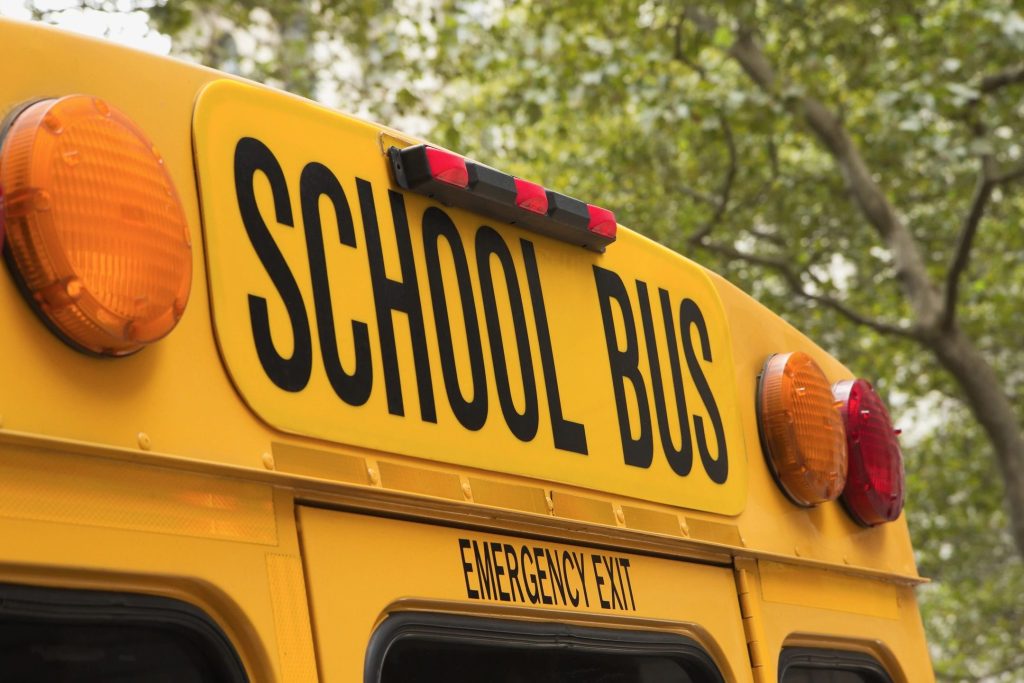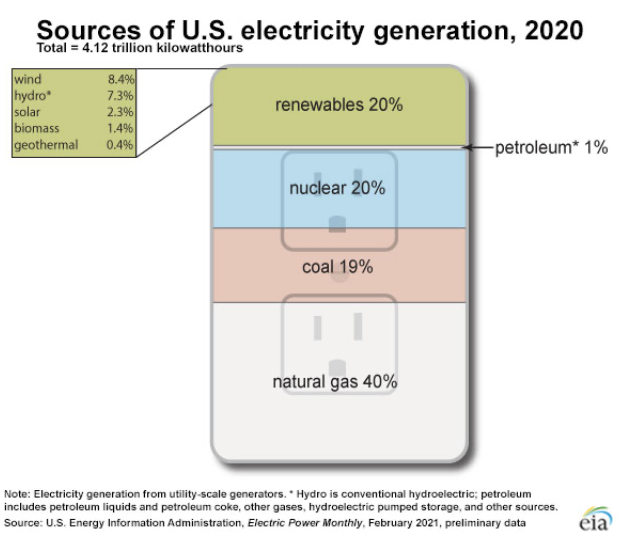Aug 17, 2021
Electric Buses are Coming Soon. Make Sure they Don’t Run on Dirty Energy.

Everybody’s talking about electric vehicles these days. It’s the biggest story in clean energy today.
More and more drivers want to replace their gasoline cars with EVs. As prices have dropped and battery technology has improved, more carmakers have started offering affordable electric models that can go further on a single charge. Even if a Tesla is still out of your budget, it’s still possible that your next car could be electric, whether a Mini Cooper SE, a Nissan Leaf or a Hyundai Ioniq.
Meanwhile, demand has outpaced supply as cities look to replace their diesel buses with EVs. And school systems too are now looking to make the switch from diesel to electric. It’s no wonder. Diesel fumes are a health risk especially dangerous for school kids.
Fortunately, help is on the way. Under the infrastructure plan put out by President Biden and approved last week by the Senate, electric school buses would receive $2.5 billion in funding, enough for about 11,000 zero-emissions buses. Another $2.5 billion would go toward what lawmakers and the White House are calling low-emissions buses. This bill would also spend $7.5 billion for electric charging stations.
Unfortunately, that’s a lot less than the $174 billion Biden initially proposed last March to boost the overall EV market, including cars, trucks and buses. That plan aimed to electrify 96,000 school buses, or about 20% of the U.S. fleet.
“We need the full funding,” said Sybil Azur, a mom and community organizer who has been working to expand the use of electric school buses in Los Angeles told Scientific American. “What’s at stake is my children’s future, my children’s health and their ability to live productive, healthy lives.”
Clean Buses = Healthier Kids

Electric buses offer such a big health benefit alone to schoolchildren that it’s only a question of time before parents will demand that their kids’ school transitions their bus fleet to 100% electric — and that they do it now. Every day that a child rides in a diesel bus is another day of exposure to harmful diesel fumes.
Half a million school buses in the United States transport more than 20 million children to and from school. About 95% of American school buses run on diesel fuel, and the air pollution inside these buses is up to 12 times higher than normal levels.
Anyone who has ever been around diesel buses or trucks knows just how nasty the smell of those fumes are. School kids are the most impacted by these fumes, with studies showing that breathing this polluted air can lead to problems with cognitive tasks and focus. Over the long term, these diesel fumes can negatively affect brain development and overall academic performance. Inhaling these fumes on a daily basis can lead to asthma, which is one of the leading causes of absenteeism.
More than that, studies show that students from low-income communities are particularly effected: “60% of students from low-income families ride the bus to school, compared to 45% of students from families with higher incomes.”
In comparison, electric buses pollute far less. Until fairly recently, battery technology wasn’t advanced enough to run a school bus for its full route without having to stop and recharge, which would be impractical. But batteries have gotten both stronger and cheaper in the last few years, with one electric bus setting a new record by driving more than 1000 miles with a single charge.
Vox said it best: “Overall, the strongest case for electric school buses is a simple one. When children are sent off to school on diesel buses, society is sabotaging them: asking them to learn and study while breathing in air that makes that harder. It’s worth spending some money and solving some technical challenges to give every child the breathing room to learn.”
The benefit to the health of schoolchildren is priceless. EV buses can also save schools money on maintenance. And as benefit to society, switching all of the nation’s school buses to electric would reduce the emissions equivalent to taking over a million cars off the road.
With transportation being the largest contributor of US GHG emissions, it is no wonder that the Biden Administration has started to push for big changes in our transportation system, including setting carbon emissions standards for passenger cars and trucks, and importantly, school buses.
Electric School Buses Are Coming, but How Soon?
Now that electric buses are practical, the hitch is cost. An electric bus can cost up to three times more than the average diesel bus. For school districts strapped for cash just to do all the things they have to do now from paying teacher salaries to providing free and reduced-cost lunches, the extra cost for an electric bus is a big barrier to doing the right thing for their kids’ health.
One school district in suburban Washington, DC was able to overcome the barrier of high initial cost. Through a service agreement with a company that offers EV buses through a service agreement, Montgomery County, Maryland Schools were able to procure the services of 300 EV school buses without having the buy the buses themselves. Over the period of the agreement, the cost to the schools to use electric buses will be about the same as if they bought their own diesel buses. This system allows schools to get EV buses now without waiting for federal or state authorities to come up with the money.
State governments are also stepping in to supplement federal funding. In our home state of Virginia, Governor Ralph Northam has awarded $20 million in the first round of the Clean Air Communities Program, which will replace diesel buses with electric buses.
“Currently, approximately 99 percent of Virginia’s public school buses use diesel and more than 3,500 buses are at least 15 years old,” said Secretary of Natural Resources Matthew J. Strickler. “This program will focus on replacing buses in disadvantaged communities already overburdened by pollution.”
While Virginia is already ranked #4 in the nation within the top 10 states with the most electric school buses committed (announced, procured, delivered or in operation), we have achieved this ranking with having a low number of only 45 buses compared to California in first place with 527. Going further than that, it is evident that electric school buses are being implemented more in suburban areas than in rural towns–when it is already known that more children in rural areas ride buses to school than in their suburban counterparts, and thus are exposed more to the harmful diesel fumes.
In neighboring North Carolina, the city of Charlotte in North Carolina has just adopted 18 electric buses for the city’s transit system. This is the first step in their Strategic Energy Action Plan (SEAP) which aims to have a city fleet and facilities fueled by 100% zero carbon-emissions sources by 2030. While this is not specifically a plan to convert diesel school buses to electric, this shows impetus by the state in transitioning to EVs.
On the other hand, in our other neighbor, West Virginia, we could not find any programs for electric school buses so far. The state has recently made progress on opening up to clean energy by allowing power purchase agreements for rooftop solar. Building on this momentum, we hope to see the state take action to give their kids clean school buses soon.
An EV School Bus Charged with Grid Power is Only Half Clean
Imagine this: a government makes a monumental change from traditional diesel powered school buses to electric school buses. Every old, smelly, loud and environmentally harmful school bus is replaced with shiny, quiet and more efficient all-electric fleets. Every school age child grows up riding to school in these, and their parents are more at ease as they know their child will be less likely to grow up with health-related problems that were proven to come from inhaling fumes from those old diesel ones.
Federal and state governments invest not billions of dollars but trillions of dollars on this transition, and make sure to have electric charging stations at all school parking lots. While students are inside learning, those shiny new rides are outside charging up to take them back home or to after-school events. Sounds like everybody wins, right?
But then it hits you: where is that electricity coming from? Has society really just spent all this money on electric vehicles and their necessary charging stations, with the intention of “going green” or “making a transition to clean energy” just to have them be powered by the traditional electric grid, which is still powered mostly by dirty energy?
In 2020, nearly 60% of America’s electricity generation came from fossil fuels – primarily coal and natural gas, with a small amount from oil. An estimated 20% of the country’s power was generated by nuclear energy, and the remaining 20% came from renewable sources. Renewable power came mostly from hydropower and wind energy, with a growing share from solar.
To be fair, like electric cars, EV buses are cleaner for the environment than diesel buses even if they’re plugged into the power grid that is still mostly dirty. As our friends at Generation180 put it: “In contrast to diesel, electric buses pollute far less, even if the electricity used to charge them comes from power plants that burn fossil fuels like coal and natural gas. (In the future, of course, the buses would ideally be powered by solar and wind power.)”
But school buses will offer much more benefit to society if they are run not merely by ordinary, mostly dirty electricity but instead by 100% clean electricity.
As a solar developer with many customers among K-12 schools, we are not only invested in solar energy. We are also invested in education, and we see major benefits to our schools using electric vehicles. It’s a question of equity that all kids are able to grow up strong and healthy, free of risks posed by diesel school buses. But we want the transition to electric buses to reach the finish line of 100% clean energy rather than faltering at some lesser amount.
When a child’s school bus is charged by solar panels on their school’s roof, parents can sleep soundly knowing that those shiny new electric school buses are not being powered by the same old dirty energy but by infinite, clean, and trustworthy power from the sun.
At the upcoming 2021 Convention of the Virginia School Board Association in Williamsburg this November, we will be discussing the benefits of rooftop solar for schools’ expected transition to electric school buses. Our panel of school board members and school administrators whose school divisions have already gone solar will be joined by advocates for electric buses and solar schools to offer guidance on how all schools can get ready for their all-electric, 100% clean bus fleet of the future.
